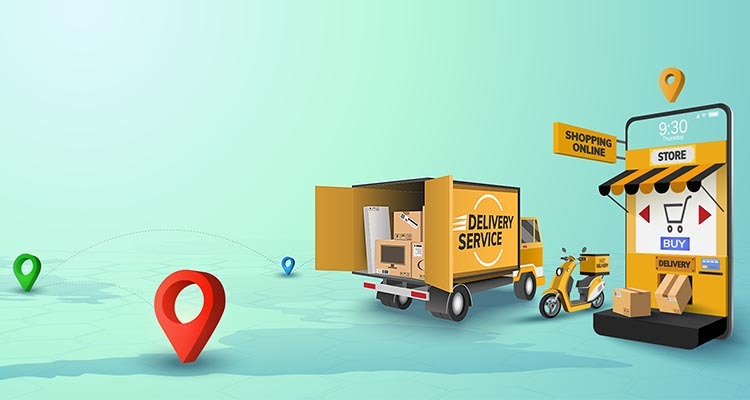
Guy Bloch discusses the shifting balance of power between retail and logistics
Shifting consumer behaviors during the Covid-19 pandemic forced retailers to re-evaluate and restructure their businesses. Suddenly, logistics providers were in a position of power as demand for delivery services outstripped supply.
Fast-forward to today, and despite a reduced need to order online, consumers have held onto the high expectations of online experiences that the lockdowns helped to establish. In fact, 88 percent of customers say the experience a company provides is as important as its product or service. Coupled with Amazon’s continued dominance in the market — now beating FedEx and UPS to become the largest provider in the US — retailers must take control of their supply chain to gain and retain customers.
The good news for retailers is that the control is back in their hands, with demand for deliveries currently lower than supply. So how can they make the most of this and what must last-mile delivery suppliers do to become the provider of choice?
Tailored deliveries that exceed expectations
Driven by high expectations and an increasing appetite for tailored delivery options, the last mile is rapidly becoming one of the most expensive functions for retailers, accounting for more than half (53 percent) of total shipping costs. However, the increased capacity in the supply chain can help even small businesses address this.

Despite many racing to offer fast delivery, the true opportunity for retailers lies in understanding and responding to the needs of their customer base. While fast delivery will make or break it for some, many customers have alternative drivers for their decision-making.
Innovative approaches can be seen across retail and ecommerce. Deliveroo is now offering shelf space in its dark stores to supermarket chains, protecting experiences for both in-store and online shoppers by ensuring in-store stock is never affected by online purchases. Furthermore, the company has moved to open physical stores, building momentum for the Grocery 2.0 micro-sector. Meanwhile, MyProtein offers eco-deliveries at checkout, promising to complete the last mile on foot, by bike, or via electric vehicle to appeal to those customers with sustainability in mind.
Add to the mix large and electrical items, which require the last mile to stretch into a customer’s home with drivers also responsible for installation, and it’s clear that speed isn’t the only priority for consumers. Offering a white glove delivery experience with a diverse range of flexible delivery options and allowing customers to choose depending on their current situation is crucial.
Diversification delivers
All this creates a complex challenge for retailers who must not only give customers multiple options but also execute these options to a high standard. With competition fierce, any missed opportunity to deliver on a promise to the consumer (whether they have paid extra for same-day delivery or accepted a delayed arrival date to receive their order in a more sustainable way) can result in a loss and reputational damage, at a time when customer retention is a top priority.
By making use of the excess supply in the chain, retailers can protect themselves and their customers, using regional diversification to mitigate delivery risks. Diversifying the pool of delivery partners empowers retailers to select carriers based on their strengths and ability to deliver the specific service required per order. It also enables them to scale during peak seasons, and quickly shift between providers as needed. Take, for example, if a same-day delivery is impacted by a shortage of drivers at a usual carrier. Instead of allowing this to have a negative impact on customer experience, the retailer can quickly secure space in an alternative carrier’s fleet, protecting both their reputation and their customer’s needs.
This also allows smaller, more flexible carriers to stake their claim in a competitive market, picking up delivery tasks from a wider variety of businesses and delivering based on their own strengths.
Tech drives flexibility
Technology is vital to delivering this flexibility and creating a network of providers that can adapt to changing needs in real-time. AI tools, chatbots, and machine learning algorithms, for example, can be leveraged to enhance customer experience before and after purchases are made. Customer interactions can be streamlined, automated, and decoupled from the carrier that delivers the goods to facilitate the buying process and ensure that customer data is not lost to third parties. Continuously optimizing owned fleets while augmenting with third-party capacity will help manage the cost of each delivery and ensure that the business is scalable and robust enough to cope with peaks in demand.
Once the last mile starts, real-time data post-purchase can be used to offer updates, tracking, exception handling with automation, and even feed into stock reallocation in the event of failed deliveries. Using a single system to manage communications with delivery providers, retailers can make the most of carrier diversification without the complexity of striking up and maintaining individual relationships, streamlining this transformational process and supporting smaller providers with ease.
Retailers are leveraging their newfound power to optimize their operations and deliver efficiencies that continuously exceed expectations. With the supply capacity outmatching the demand, logistics providers are refining their offerings to match market demands. If managed wisely, there is potential to create a fairer, more flexible delivery ecosystem – which will be a win for consumers, carriers, and retailers alike.
For a list of the sources used in this article, please contact the editor.
Guy Bloch serves as CEO and board member at Bringg, a delivery management platform that unifies last-mile delivery, fulfillment, and returns. With an MBA from NYIT and a BA from Ben Gurion University, Guy boasts over 20 years of experience in leading organizations and transforming them into successful, hyper-growth environments.